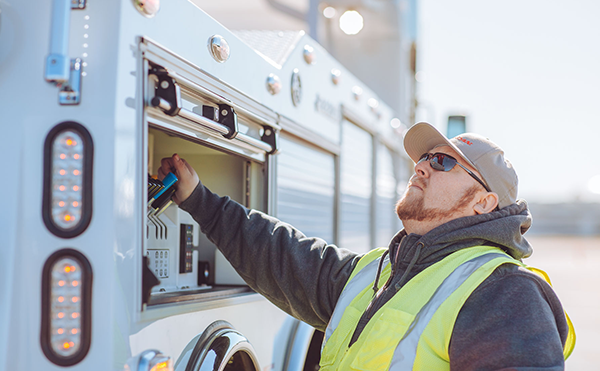
Brian J Riker
President and Chief Compliance Specialist,
Fleet Compliance Solutions, LLC
A version of this column originally appeared
in the Sept 10, 2021 Issue of American Towman
“I have a few violations that I don’t think are right. What can I do?”
This is the one time you hope the officer writes you a citation. Of course, you won’t demand a citation, but if they do cite you rather than just noting a violation on the inspection report, you have a better chance to get the violation removed or amended on your SMS/CSA record. If a citation is successfully challenged in Court and dismissed or modified, you can then file a DataQ challenge to have your SMS/CSA record updated to remove or amend the violation and they must comply.
If no citation was issued you can still submit a DataQ challenge, but it is unlikely to have an impact on your record. The challenge goes back to the same agency that issued the violation, often even to the same officer, for review. To successfully challenge a violation without a citation you need to put together a very detailed and convincing report of why the officer was incorrect.

I suggest, if it is safe to do so during an inspection, that you photograph the alleged violations before making any corrections or moving the vehicle. Try to capture location information in the photos to document the true condition of the vehicle or load. This is helpful in determining if the violation did in fact exist and if the officer noted it correctly. If you are unsure of the violation, ask the officer to point it out. Most motor carrier enforcement personnel I know just want you to be safe and are willing to educate you. They are usually happy to answer questions and point out issues before those issues become critical safety violations.
Here’s the bottom line
Complete and proper daily pre-trip inspections along with routine preventative maintenance will help keep your trucks and drivers safe, legal, and generating revenue. Maintenance doesn’t cost, it pays in the form of better uptime, less frustration, and, from this perspective, fewer issues with motor carrier enforcement.
A well-maintained truck will also have a higher resale value, or given the issues with new vehicle supplies today, last much longer than originally planned without causing many headaches.
As an industry, we train for the “cool stuff” like rollovers, winching and specialty vehicle hookups but often overlook the basics, like how to properly inspect our equipment or what to do during a roadside inspection. I strongly suggest tow bosses consider investing in some traditional commercial driver training, not just tow operator training, given that your team spends about 80% of their time behind the wheel and only 20% actually doing tow hookups or recoveries. I am not saying one is more important than the other, just that a great tower is more than just an excellent rigger and technician. They also must be expert motor vehicle operators, including understanding the mechanics of their vehicles and the regulations with which they are expected to comply. You can’t play the game well if you don’t know the rules.
TOW BAR USE IN PENNSYLVANIA
This special note is for towers that also do vehicle transportation services such as auction or salvage cars in the State of Pennsylvania. It has recently come to our attention that in parts of the state, there are motor carrier officers citing transporters for using the “crash chain” hookup. This is when you use your wheel lift on the carrier to tow a second vehicle but are not using the wheel retainers, but instead are using it as an old-school tow bar. While it is the opinion of this author that this practice is legal, it is currently being challenged and investigated by the Pennsylvania State Police, FMCSA, and CVSA to determine how Pennsylvania will proceed with uniform enforcement statewide. Be on the lookout for future updates.